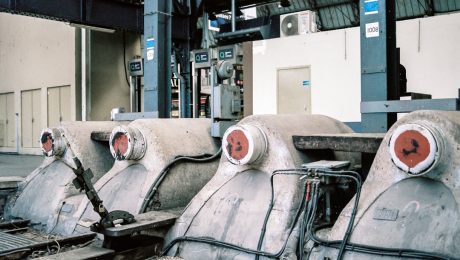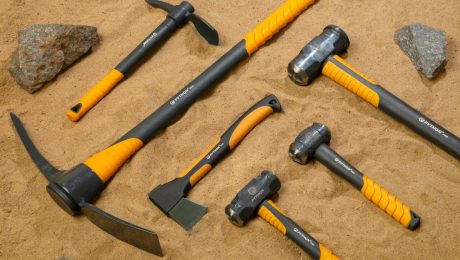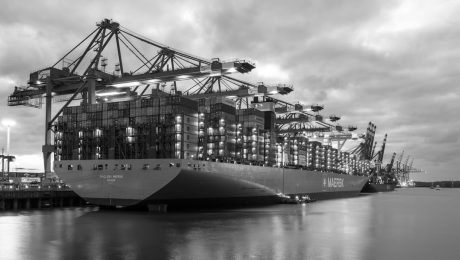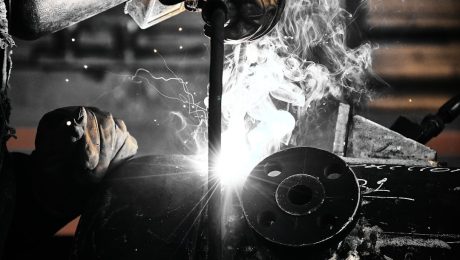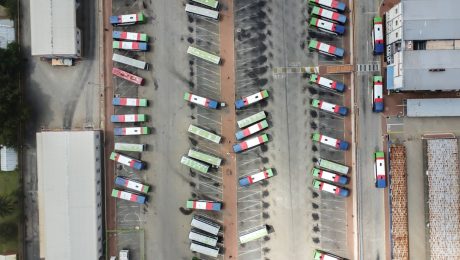Pipe bending and straightening are crucial processes in numerous industries, from construction and manufacturing to plumbing and oil and gas. Whether you’re working with steel, copper, aluminum, or PVC, understanding the techniques and tools involved is essential for achieving accurate, durable results. This comprehensive guide explores various solutions for both bending and straightening pipes, helping you choose the best approach for your specific needs.
1. Choosing the Right Pipe Bending Method
The optimal method for bending a pipe depends on several factors: the pipe’s material, diameter, wall thickness, desired bend radius, and the number of bends required. Several common methods exist:
- Manual Bending: Suitable for smaller diameter, thinner-walled pipes, manual bending involves using hand tools like pipe benders or spring-loaded benders. This method is relatively inexpensive but labor-intensive and may not be suitable for large-scale projects or complex bends.
- Hydraulic Bending: This method uses a hydraulic press to bend pipes, offering greater precision and control, especially for larger diameter pipes and tighter radii. Hydraulic benders are ideal for achieving consistent bends in various materials.
- Rotary Draw Bending: This advanced technique uses a rotating die to pull the pipe through, creating a smooth, consistent bend with minimal wall thinning. It’s commonly used for high-precision applications and complex shapes.
- Roll Bending: Roll bending machines use three rollers to gradually bend the pipe. This method is excellent for long, continuous bends and is often used in large-scale industrial applications.
- Flame Bending: This method uses heat to soften the pipe locally, allowing for easier bending. While effective, flame bending requires careful control to avoid overheating and damaging the pipe.
Careful consideration of these methods and their limitations is crucial for selecting the most appropriate technique for your specific project.
2. Addressing Pipe Straightening Challenges
Pipes can become bent or dented during transport, installation, or due to external forces. Straightening bent pipes requires careful consideration to avoid further damage. Several methods exist:
- Manual Straightening: For minor bends in smaller pipes, manual straightening using hammers and mallets may be sufficient. This method requires skill and precision to avoid kinks or cracks.
- Hydraulic Press Straightening: Similar to hydraulic bending, a hydraulic press can apply controlled force to straighten bent pipes. This is effective for larger pipes and more significant bends.
- Three-Roll Straightening: This method uses three rollers to gradually straighten the pipe by applying controlled pressure. It’s an effective method for straightening long lengths of pipe with multiple bends.
- Specialized Pipe Straightening Machines: For complex bends or large-scale operations, dedicated pipe straightening machines offer precise control and automation. These machines are commonly used in industrial settings.
The choice of straightening method depends heavily on the severity of the bend and the pipe’s material and dimensions. Overly aggressive straightening can weaken the pipe, so caution is necessary.
3. Essential Tools and Equipment
The tools and equipment required for pipe bending and straightening vary depending on the chosen method. However, some common tools include:
- Pipe Benders (Hand and Hydraulic): These tools are crucial for creating bends in pipes of various sizes and materials.
- Hydraulic Presses: Essential for both bending and straightening larger diameter pipes.
- Roll Bending Machines: Used for creating long, continuous bends or straightening pipes.
- Pipe Wrenches and Clamps: Used to secure the pipe during bending or straightening processes.
- Measuring Tools (Tape Measures, Calipers): Essential for accurate measurements and ensuring precise bends.
- Safety Gear (Gloves, Eye Protection): Always prioritize safety when working with pipes and heavy machinery.
Investing in high-quality tools is crucial for achieving accurate and durable results, minimizing the risk of damage to the pipe or injury to the operator.
4. Material Considerations for Pipe Bending and Straightening
Different pipe materials exhibit varying levels of ductility and malleability, impacting the feasibility and techniques used for bending and straightening. Key material considerations include:
- Steel: Steel pipes require more force to bend and may require preheating for larger bends or to avoid cracking.
- Copper: Copper is relatively malleable and can be bent using various methods, including manual bending. However, excessive bending can work-harden the copper, reducing its ductility.
- Aluminum: Aluminum is relatively easy to bend but susceptible to creasing if not handled carefully. Proper lubrication can help prevent this.
- PVC: PVC pipes require specialized techniques and tools as they are brittle and prone to cracking under excessive force. Heating may be necessary for larger bends.
Understanding the material properties is vital for selecting the appropriate bending and straightening techniques and minimizing the risk of material failure.
5. Safety Precautions and Best Practices
Safety should always be the top priority when working with pipe bending and straightening equipment. Essential safety precautions include:
- Proper Training: Ensure all personnel involved are adequately trained in the safe operation of the equipment and techniques.
- Personal Protective Equipment (PPE): Always wear appropriate PPE, including safety glasses, gloves, and hearing protection.
- Machine Guards: Ensure all moving parts of machinery are properly guarded to prevent accidental contact.
- Emergency Procedures: Establish and practice emergency procedures in case of equipment malfunction or injury.
- Regular Inspection: Regularly inspect equipment for wear and tear and ensure proper maintenance.
Following these safety precautions will help minimize the risk of accidents and ensure a safe working environment.
By understanding the various methods, tools, and safety precautions involved in pipe bending and straightening, you can effectively and safely complete your projects. Remember to always prioritize safety and choose the most appropriate technique for your specific needs and materials.
Tags: pipe bending, pipe straightening, hydraulic bending, pipe bending machine, pipe straightening techniques
Shipping goods internationally can seem daunting, a labyrinth of paperwork, regulations, and logistical nightmares. But with careful planning and the right knowledge, the process can be streamlined and even straightforward. This comprehensive guide will walk you through every step, ensuring your overseas shipment arrives safely and on time.
1. Choosing the Right Shipping Method: Sea, Air, or Land?
The first crucial decision is selecting the appropriate shipping method. Your choice will depend on several factors, including:
- Budget: Sea freight is generally the most economical option, especially for large shipments, but it’s the slowest. Air freight is the fastest but the most expensive. Land freight (trucking) is a viable option for shipments between neighboring countries or for specific routes.
- Time Sensitivity: If your goods need to arrive quickly, air freight is the clear winner. Sea freight is suitable for less time-sensitive goods. Land freight offers a middle ground, depending on the distance.
- Goods Type and Size: Perishable goods or those requiring temperature control are better suited for air freight. Bulky or heavy goods are often more cost-effective via sea freight. Land freight is best for goods that can withstand road travel and are not overly fragile.
- Destination: Accessibility by different transportation modes will vary depending on the destination country’s infrastructure and regulations.
Carefully weigh these factors to determine the most efficient and cost-effective method for your specific needs. Consider obtaining quotes from multiple carriers to compare pricing and service offerings.
2. Understanding Customs Regulations and Documentation: Navigating the Red Tape
International shipping involves navigating a complex web of customs regulations. Each country has its own specific rules and requirements, and failing to comply can lead to delays, fines, or even the seizure of your goods. Key documents you’ll typically need include:
- Commercial Invoice: A detailed description of the goods being shipped, including quantity, value, and weight.
- Packing List: A list of the contents of each package, including details like dimensions and weight.
- Bill of Lading (B/L): A contract between the shipper and the carrier, acting as a receipt for the goods and outlining the terms of shipment.
- Certificate of Origin: A document verifying the country of origin of the goods.
- Other Certificates: Depending on the type of goods, you may need additional certificates, such as health certificates for food products or import permits for restricted items.
Research the specific customs regulations of both the exporting and importing countries well in advance. Consider consulting a customs broker to assist with the complex documentation and ensure compliance.
3. Packaging and Insurance: Protecting Your Investment
Proper packaging is crucial to protect your goods during transit. The packaging should be robust enough to withstand the rigors of international shipping, including potential rough handling and extreme temperatures. Consider using:
- Sturdy boxes: Choose boxes made of strong corrugated cardboard, ensuring they are appropriately sized for the goods.
- Protective padding: Use bubble wrap, foam peanuts, or other cushioning materials to prevent damage during transit.
- Reinforcement: Use strapping or tape to secure the boxes and prevent them from collapsing.
- Clear labeling: Clearly label each package with the recipient’s address, contact information, and a detailed description of the contents.
Furthermore, purchasing cargo insurance is highly recommended. This protects your investment against loss or damage during transit, providing financial compensation in case of unforeseen events.
4. Selecting a Reliable Shipping Carrier: Finding the Right Partner
Choosing the right shipping carrier is paramount. Research different carriers, comparing their services, pricing, and reputation. Consider factors such as:
- Reputation and Reliability: Look for carriers with a proven track record of on-time delivery and excellent customer service.
- Tracking Capabilities: Ensure the carrier offers real-time tracking so you can monitor your shipment’s progress.
- Insurance Options: Check the carrier’s insurance options and coverage limits.
- Customer Support: Look for a carrier that provides responsive and helpful customer support.
- Specialized Services: Some carriers offer specialized services, such as temperature-controlled shipping or handling of hazardous materials.
Obtain quotes from multiple carriers and compare their offerings before making a decision. Read online reviews to gauge their reputation and customer satisfaction.
5. Tracking and Delivery: Monitoring Your Shipment’s Journey
Once your shipment is underway, utilize the carrier’s tracking system to monitor its progress. This allows you to stay informed about its location and anticipated arrival time. Be aware of potential delays and communicate proactively with the carrier and recipient if any issues arise. Confirm the delivery upon arrival and address any damage or discrepancies promptly.
Thorough planning and attention to detail are essential for successful overseas shipping. By following these steps, you can significantly reduce the risks and ensure your goods arrive safely and on time, conquering the globe with your shipments.
Tags: Overseas shipping, international shipping, shipment planning, customs regulations, shipping carriers
Industrial machinery relies heavily on efficient and reliable fluid transfer systems. At the heart of these systems lies the humble pipe – a seemingly simple component that plays a crucial role in the smooth and safe operation of countless industrial processes. From transporting high-pressure steam in power plants to conveying delicate chemicals in pharmaceutical manufacturing, pipes are the unsung heroes of heavy industry. This comprehensive guide explores the multifaceted world of pipe usage in industrial machinery, delving into material selection, application specifics, maintenance protocols, and essential safety considerations.
1. Material Selection: Choosing the Right Pipe for the Job
The selection of pipe material is paramount, as it directly impacts the system’s longevity, safety, and efficiency. The choice depends heavily on the fluid being transported, the operating pressure and temperature, and the corrosive environment. Common materials include:
- Carbon Steel: A cost-effective option suitable for many applications, but susceptible to corrosion in certain environments. Often used for water, steam, and non-corrosive gases.
- Stainless Steel: Highly resistant to corrosion, making it ideal for handling chemicals, pharmaceuticals, and food products. Comes in various grades (e.g., 304, 316) offering varying degrees of corrosion resistance.
- Cast Iron: Durable and resistant to pressure, but prone to cracking under stress. Commonly used in drainage and wastewater systems.
- Plastic Pipes (PVC, HDPE): Lightweight, corrosion-resistant, and cost-effective. Suitable for low-pressure applications and chemical handling, but have limitations in terms of temperature and pressure resistance.
- Copper: Excellent corrosion resistance and thermal conductivity, often used in plumbing and HVAC systems.
Selecting the appropriate material requires careful consideration of all factors to ensure optimal performance and prevent costly failures.
2. Pipe Applications in Diverse Industrial Settings
The applications of pipes in industrial machinery are vast and varied. Here are a few examples:
- Power Generation: High-pressure steam pipes in power plants, cooling water circulation systems, and fuel delivery lines.
- Chemical Processing: Transporting and processing various chemicals, often requiring specialized materials resistant to corrosion and high temperatures.
- Oil and Gas: Transporting crude oil, natural gas, and refined products over long distances, often involving high pressures and challenging environmental conditions.
- Pharmaceutical Manufacturing: Handling sterile fluids and pharmaceuticals, requiring highly sanitary and corrosion-resistant pipes.
- Food and Beverage Processing: Transporting liquids and gases in food and beverage production, demanding materials that meet stringent hygiene standards.
- HVAC Systems: Distributing heating and cooling fluids throughout buildings and industrial facilities.
The specific requirements for pipe materials, dimensions, and fittings vary significantly across these applications.
3. Essential Pipe Fittings and Components
Pipes rarely operate in isolation. A comprehensive piping system requires a range of fittings and components to ensure proper flow control, direction changes, and connections. These include:
- Elbows: Used to change the direction of the pipe.
- Tees: Allow for branching connections.
- Unions: Allow for easy disconnection and reconnection of pipes.
- Valves: Control the flow of fluids (gate valves, globe valves, ball valves, etc.).
- Flanges: Used to connect pipes and components using bolts.
- Reducers: Connect pipes of different diameters.
- Strainers: Remove debris from fluids.
The proper selection and installation of these components are critical to the overall performance and reliability of the piping system.
4. Maintenance and Inspection of Industrial Piping Systems
Regular maintenance and inspection are crucial for preventing leaks, failures, and ensuring the safety of personnel and equipment. This includes:
- Visual Inspections: Regularly checking for signs of corrosion, damage, or leaks.
- Pressure Testing: Periodically testing the system to ensure it can withstand operating pressures.
- Non-Destructive Testing (NDT): Using techniques like ultrasonic testing or radiography to detect internal flaws.
- Cleaning and Flushing: Regularly cleaning the pipes to remove debris and buildup.
- Repair and Replacement: Promptly repairing or replacing damaged sections of the piping system.
A well-maintained piping system significantly reduces the risk of costly downtime and safety hazards.
5. Safety Regulations and Best Practices
Safety is paramount when working with industrial piping systems. Adherence to relevant safety regulations and best practices is essential. This includes:
- Proper Design and Installation: Ensuring that the piping system is designed and installed according to industry standards and codes.
- Lockout/Tagout Procedures: Implementing safe procedures for isolating and de-energizing equipment before maintenance or repair.
- Personal Protective Equipment (PPE): Using appropriate PPE, such as safety glasses, gloves, and protective clothing.
- Emergency Response Plans: Having plans in place to handle leaks, spills, or other emergencies.
- Regular Training: Providing regular training to personnel on safe working practices and emergency procedures.
Neglecting safety can lead to serious accidents, injuries, and environmental damage.
In conclusion, the seemingly simple pipe plays a vital role in the efficient and safe operation of industrial machinery. Careful consideration of material selection, application specifics, maintenance protocols, and safety regulations is crucial for ensuring the longevity and reliability of these critical systems. By understanding these aspects, industries can optimize their processes and minimize the risk of costly failures and safety incidents.
Tags: industrial piping, industrial machinery, pipe usage, pipe materials, pipe maintenance
Construction nails are seemingly simple components, yet their selection significantly impacts the strength, longevity, and overall success of any building project. Choosing the wrong nail can lead to structural weaknesses, costly repairs, and even safety hazards. This comprehensive guide explores the intricacies of construction nail standards and durability, ensuring you’re equipped to make informed decisions for your next project.
Understanding Construction Nail Standards: Size, Gauge, and Length
Construction nails are standardized according to their size, gauge (thickness), and length. These specifications are crucial for ensuring consistent performance and compatibility with different materials. The most common standard is the American Wire Gauge (AWG), which inversely measures the thickness of the nail; a smaller AWG number indicates a thicker nail. Length is typically measured in inches or centimeters, and is selected based on the materials being joined and the desired penetration depth. For example, a common framing nail might be a 16d (penny) nail, which translates to approximately 3.5 inches in length and a specific gauge, suitable for framing lumber. Different standards exist in various countries, so it’s essential to check the relevant regional standards before purchasing.
The Material Matters: Exploring Nail Composition and its Impact on Durability
The material used to manufacture construction nails significantly affects their durability and resistance to corrosion. Common materials include:
- Steel: The most prevalent material, offering a good balance of strength and cost-effectiveness. Steel nails are often galvanized (coated with zinc) to enhance corrosion resistance, particularly in outdoor applications.
- Aluminum: Lighter than steel, aluminum nails are preferred for applications where weight is a concern or when working with softer materials to avoid splitting. They are naturally corrosion-resistant.
- Stainless Steel: Offers superior corrosion resistance compared to galvanized steel, making it ideal for exterior projects or environments with high humidity. However, stainless steel nails are generally more expensive.
- Copper: Primarily used in specialized applications, copper nails offer excellent corrosion resistance and are sometimes chosen for their aesthetic appeal in certain architectural styles.
The choice of material should be carefully considered based on the project’s location, environmental conditions, and the required lifespan of the structure.
Nail Types and Their Specific Applications: From Framing to Finishing
Construction nails are available in a wide variety of types, each designed for specific applications. Some common types include:
- Common Nails: General-purpose nails suitable for various woodworking and construction tasks.
- Framing Nails: Heavier and longer nails designed for framing lumber, offering superior holding power.
- Finishing Nails: Smaller and thinner nails used for trim work and finer carpentry, leaving smaller holes for easier filling.
- Roofing Nails: Specifically designed with rings or barbs to provide superior holding power in roofing materials, preventing blow-off in windy conditions.
- Concrete Nails: Heavily hardened and often featuring a spiral shank for enhanced holding power in concrete and masonry.
Selecting the appropriate nail type is critical for ensuring structural integrity and preventing premature failure.
Testing and Certification: Ensuring Nail Quality and Compliance
Many construction nails undergo rigorous testing to meet specific standards and ensure consistent quality. These tests often evaluate the nail’s holding power, shear strength, and resistance to bending or breaking. Certification bodies, such as those accredited by ISO, provide independent verification of nail quality and compliance with relevant industry standards. Looking for certified nails can provide assurance of their performance and durability.
Factors Affecting Nail Durability Beyond Material and Type
While nail material and type are crucial, several other factors influence their long-term durability:
- Proper Driving Technique: Using the correct nail gun or hammer and driving nails straight and fully seated prevents premature failure.
- Wood Moisture Content: Nails perform best in wood with appropriate moisture content. Changes in moisture can cause wood to shrink or swell, potentially loosening nails.
- Environmental Exposure: Exposure to extreme weather conditions, such as prolonged rain or intense sunlight, can accelerate corrosion and reduce nail lifespan.
- Wood Species: The density and hardness of the wood influence nail holding power. Harder woods generally offer better nail retention.
- Pre-drilling: Pre-drilling pilot holes, especially when working with hard woods or brittle materials, can prevent splitting and improve nail holding power.
Careful consideration of these factors, in addition to the nail’s inherent properties, is essential for maximizing its service life.
By understanding the nuances of construction nail standards and the various factors influencing their durability, you can make informed choices that contribute to the strength, longevity, and safety of your projects. Remember to always choose the right nail for the job, and follow best practices for installation to ensure optimal performance.
In today’s globally interconnected marketplace, efficient logistics are no longer a luxury – they’re a necessity. Successfully navigating the complexities of moving goods requires a sophisticated understanding of both maritime and land logistics, and how they seamlessly integrate. This post delves into key strategies for optimizing your supply chain, ensuring timely and cost-effective delivery of your products.
1. Optimizing Maritime Shipping Routes and Carrier Selection
The maritime leg of your logistics journey forms the backbone of global trade. Choosing the right shipping routes and carriers is paramount. Factors to consider include:
- Transit Time: Balance speed with cost. Faster routes often come at a premium. Analyze your product’s sensitivity to delays and prioritize accordingly.
- Carrier Reliability: Research carriers’ on-time performance, track record of damage claims, and overall reputation. Consider using a reputable freight forwarder to help navigate carrier options.
- Port Congestion: Monitor port activity levels to avoid delays caused by congestion. Consider alternative ports if necessary, factoring in inland transportation costs.
- Container Type and Size Optimization: Select the appropriate container type (e.g., dry van, reefer, open top) and size to minimize wasted space and maximize efficiency. Careful planning can significantly reduce freight costs.
- Incoterms: Understand and correctly apply Incoterms (International Commercial Terms) to clarify responsibilities and costs between buyer and seller regarding shipping.
2. Integrating Land Transportation for Seamless Delivery
Once goods arrive at a port, efficient land transportation is crucial for final delivery. This stage often involves a complex interplay of modes, including trucking, rail, and potentially even air freight for time-sensitive deliveries. Key considerations include:
- Multimodal Transportation: Leveraging a combination of transport modes (e.g., sea freight to port, then trucking to final destination) can often provide the most cost-effective and efficient solution.
- Last-Mile Delivery Strategies: The final leg of delivery is often the most challenging and expensive. Optimizing last-mile delivery requires careful consideration of factors like delivery density, traffic patterns, and delivery windows.
- Warehouse Management and Inventory Control: Efficient warehousing is essential for managing inventory, optimizing storage space, and facilitating timely order fulfillment. Implementing a robust Warehouse Management System (WMS) can significantly improve efficiency.
- Route Optimization Software: Utilizing route optimization software can help minimize transportation costs and transit times by dynamically adjusting routes based on real-time traffic and other factors.
- Partnering with Reliable Land Carriers: Choosing reliable and experienced trucking companies or rail operators is critical for timely and damage-free delivery.
3. Implementing Technology for Enhanced Visibility and Control
Technology plays a vital role in modern logistics. Leveraging technology provides greater visibility, control, and efficiency across the entire supply chain. Key technological advancements include:
- GPS Tracking: Real-time tracking of shipments allows for proactive monitoring and immediate responses to potential delays or disruptions.
- Transportation Management Systems (TMS): TMS software streamlines various logistics functions, including route planning, shipment tracking, and carrier management.
- Blockchain Technology: Blockchain offers enhanced security and transparency by creating an immutable record of all transactions and movements within the supply chain.
- Internet of Things (IoT): IoT sensors can monitor environmental conditions within containers (temperature, humidity) and provide real-time data on the condition of goods.
- Data Analytics: Analyzing data from various sources can identify bottlenecks, optimize routes, and improve overall efficiency.
4. Risk Management and Contingency Planning
The global supply chain is susceptible to various risks, including natural disasters, geopolitical instability, and unforeseen delays. Effective risk management is crucial for mitigating potential disruptions:
- Supply Chain Diversification: Reducing reliance on single suppliers or transportation routes minimizes the impact of potential disruptions.
- Insurance and Indemnification: Adequate insurance coverage protects against potential losses due to damage, theft, or delays.
- Contingency Planning: Developing contingency plans for various scenarios (e.g., port closures, natural disasters) ensures business continuity.
- Real-time Monitoring and Alert Systems: Implementing systems that provide real-time alerts of potential disruptions enables proactive responses.
- Strong Supplier Relationships: Building strong relationships with key suppliers ensures collaborative problem-solving and efficient communication during disruptions.
5. Sustainability and Environmental Considerations
Environmental responsibility is increasingly important in logistics. Implementing sustainable practices reduces the environmental impact of your operations:
- Fuel-Efficient Transportation: Optimizing routes, using fuel-efficient vehicles, and employing alternative fuels (e.g., LNG, biofuels) reduces carbon emissions.
- Reduced Packaging: Minimizing packaging materials reduces waste and transportation costs.
- Sustainable Packaging Materials: Using recycled or biodegradable packaging materials promotes environmental sustainability.
- Carbon Offset Programs: Investing in carbon offset programs can compensate for unavoidable emissions.
- Green Certifications: Seeking green certifications (e.g., ISO 14001) demonstrates commitment to environmental sustainability.
By implementing these strategies, businesses can achieve significant improvements in efficiency, cost-effectiveness, and sustainability within their maritime and land logistics operations. The key is to adopt a holistic approach, integrating technology, risk management, and sustainable practices to create a truly optimized and resilient supply chain.
SEO Tags: Maritime Logistics, Land Logistics, Supply Chain Optimization, Logistics Strategies, Transportation Management
body {
font-family: sans-serif;
line-height: 1.6;
}
h1, h2, h3 {
color: #333;
}
h1 {
font-size: 2.5em;
}
h2 {
font-size: 2em;
}
h3 {
font-size: 1.5em;
}
GloballSteel stands as a leading provider of high-quality steel products, catering to a diverse range of industries and applications. This comprehensive overview delves into the breadth and depth of our product portfolio, highlighting the key features and benefits of each offering. We are committed to delivering superior materials that meet the most demanding specifications, ensuring strength, durability, and reliability in your projects.
Carbon Steel: The Foundation of Strength
Our carbon steel range forms the bedrock of our product portfolio. This versatile material offers a robust balance of strength, weldability, and cost-effectiveness, making it ideal for a wide array of applications. We offer various grades of carbon steel, including:
- Mild Steel: Known for its excellent formability and weldability, mild steel is commonly used in construction, automotive manufacturing, and general fabrication.
- Medium Carbon Steel: Offering increased strength and hardness compared to mild steel, medium carbon steel is suitable for applications requiring greater durability, such as machinery components and structural elements.
- High Carbon Steel: Possessing superior strength and hardness, high carbon steel is often employed in tools, springs, and other high-stress applications where exceptional resilience is crucial.
We ensure stringent quality control throughout the production process, guaranteeing consistent performance and reliability in every batch of carbon steel we deliver.
Alloy Steel: Enhanced Performance for Demanding Applications
For applications requiring enhanced properties beyond those offered by carbon steel, our alloy steel range provides superior performance. The addition of alloying elements, such as chromium, nickel, and molybdenum, significantly improves strength, corrosion resistance, and high-temperature performance. We offer a variety of alloy steels tailored to specific needs, including:
- Stainless Steel: Renowned for its exceptional corrosion resistance, our stainless steel grades are widely used in food processing, chemical industries, and architectural applications.
- High-Strength Low-Alloy (HSLA) Steel: Combining high strength with good weldability and formability, HSLA steel is a cost-effective solution for structural applications requiring lightweight yet robust components.
- Tool Steel: Designed for demanding cutting and forming operations, our tool steel grades provide exceptional hardness, wear resistance, and toughness.
Our alloy steel products are meticulously manufactured to meet or exceed industry standards, ensuring optimal performance in even the most challenging environments.
Specialized Steel Products: Tailored Solutions for Unique Needs
Beyond our standard range, GloballSteel offers a selection of specialized steel products designed to meet specific industry requirements. This includes:
- Galvanized Steel: Providing superior corrosion protection, galvanized steel is ideal for outdoor applications, extending the lifespan of structures and components.
- Weathering Steel: This unique steel develops a protective patina over time, minimizing the need for maintenance and offering a distinctive aesthetic appeal.
- Rebar (Reinforcing Bar): Essential for reinforced concrete construction, our rebar is manufactured to precise specifications, ensuring structural integrity and safety.
Our commitment to innovation ensures we continually expand our specialized offerings to meet the evolving demands of our customers.
Industry-Specific Solutions: Partnering for Success
GloballSteel understands that different industries have unique requirements. We provide tailored solutions to meet the specific needs of various sectors, including:
- Construction: From structural steel for high-rise buildings to rebar for foundations, we offer a comprehensive range of products for all construction needs.
- Automotive: Our high-strength, lightweight steels contribute to fuel efficiency and enhanced safety in automotive applications.
- Manufacturing: We supply a wide range of steel grades for machinery components, tooling, and other industrial applications.
- Energy: Our specialized steels are used in power generation, oil & gas, and renewable energy infrastructure projects.
Our experienced team collaborates closely with clients to understand their specific requirements and provide the optimal steel solutions for their projects.
Quality Assurance and Sustainability: Our Commitment to Excellence
GloballSteel is committed to delivering superior quality and sustainable practices. Our rigorous quality control processes ensure that every product meets or exceeds industry standards. We utilize advanced testing methods and adhere to strict environmental regulations, minimizing our environmental impact while maintaining the highest standards of product quality. Our commitment to sustainability extends throughout our operations, from sourcing raw materials to delivering finished products.
GloballSteel’s extensive product portfolio ensures we have the right steel solution for your needs. Contact us today to learn more about our products and how we can assist you in your next project.
SEO Tags: GloballSteel, Steel Products, Steel Portfolio, Carbon Steel, Alloy Steel
Ring shank nails are a crucial component in the construction of robust and durable wooden structures. Often overlooked in favor of their simpler counterparts, these nails offer superior holding power and resistance to withdrawal, making them ideal for a wide range of applications. This comprehensive guide will delve into the specifics of ring shank nails, exploring their advantages, disadvantages, and best practices for their use in various wooden structures.
Understanding Ring Shank Nail Design and Functionality
Unlike common nails with smooth shafts, ring shank nails feature rings or barbs along their shaft. These rings significantly increase the surface area in contact with the wood. This increased surface area creates a much stronger mechanical grip, resisting both lateral forces (pulling the nail sideways) and withdrawal forces (pulling the nail straight out). The rings dig into the wood fibers, preventing the nail from easily backing out, even under significant stress or vibration. The depth and spacing of the rings can vary depending on the manufacturer and the specific application, influencing the overall holding power.
Applications of Ring Shank Nails in Wooden Structures
The superior holding power of ring shank nails makes them particularly suitable for applications where strength and durability are paramount. They are commonly used in:
- Framing: Constructing walls, roofs, and floors in timber-framed buildings. Their high holding power ensures the structural integrity of the framework, even under heavy loads.
- Decking: Securing decking boards to joists, providing resistance to foot traffic and potential movement caused by weather changes.
- Subflooring: Attaching plywood or OSB subflooring to joists, creating a stable and even base for the finished floor.
- Exterior cladding: Securing siding or other exterior cladding materials, providing resistance to wind uplift and other environmental stresses.
- Heavy timber construction: Joining large timbers in heavy-duty applications, such as bridges or industrial structures.
- Furniture making: While often less common than other nails in fine furniture, they can be used in applications requiring strong joints.
Advantages of Using Ring Shank Nails
The benefits of using ring shank nails are numerous, contributing to stronger and more reliable wooden structures:
- Superior Holding Power: This is the primary advantage. The rings significantly increase the nail’s resistance to withdrawal and lateral forces.
- Enhanced Durability: Structures built with ring shank nails are more resistant to damage caused by movement, vibration, and environmental factors.
- Reduced Maintenance: The increased holding power minimizes the risk of nails loosening or backing out, reducing the need for repairs and maintenance.
- Cost-Effective in the Long Run: While the initial cost might be slightly higher than common nails, the increased durability and reduced maintenance often make them a more cost-effective choice in the long run.
- Improved Joint Strength: They create stronger, more reliable joints compared to nails with smooth shafts.
Disadvantages and Considerations When Using Ring Shank Nails
Despite their many advantages, ring shank nails do have some drawbacks to consider:
- Potential for Wood Splitting: The rings can increase the risk of wood splitting, especially when driving nails into hard or brittle wood. Pre-drilling pilot holes is often recommended to mitigate this risk.
- Increased Driving Force Required: The rings can make them slightly more difficult to drive compared to smooth shank nails, requiring more force or the use of a nail gun.
- Less Suitable for Fine Work: Their larger size and aggressive grip can make them unsuitable for delicate woodworking or furniture projects where a more refined finish is desired.
- Cost: Ring shank nails typically cost slightly more than common nails.
Choosing the Right Ring Shank Nails for Your Project
Selecting the appropriate ring shank nails involves considering several factors:
- Wood Type: Harder woods may require pre-drilling to prevent splitting. Softer woods may not require pre-drilling.
- Nail Size and Length: The length should be sufficient to penetrate the wood adequately and provide sufficient grip. The diameter should be appropriate for the wood thickness and intended application.
- Ring Configuration: The design and spacing of the rings will influence the holding power. Check manufacturer specifications.
- Nail Gun Compatibility: If using a nail gun, ensure the nails are compatible with your tool.
- Coating: Galvanized or other coated nails offer better resistance to corrosion in outdoor applications.
Always consult relevant building codes and standards for specific requirements related to nail type, size, and spacing in your project.
By understanding the properties and applications of ring shank nails, you can ensure the construction of strong, durable, and long-lasting wooden structures. Their superior holding power makes them an invaluable asset in various carpentry and construction projects.
SEO Tags:
ring shank nails, wooden construction, construction nails, timber framing, nail specifications
body {
font-family: sans-serif;
line-height: 1.6;
}
h1, h2, h3 {
color: #333;
}
Annealed wire, a seemingly simple material, plays a surprisingly crucial role in countless applications across various industries. Its unique properties, achieved through a controlled heating and cooling process, make it exceptionally versatile and indispensable for a wide range of products. This blog post delves into the fascinating world of annealed wire, exploring its key characteristics and diverse applications.
1. The Science Behind Annealing: Achieving Optimal Wire Properties
Annealing is a heat treatment process that alters the microstructure of a metal, in this case, wire. The wire is heated to a specific temperature, held there for a period of time, and then slowly cooled. This process relieves internal stresses within the metal, making it softer, more ductile, and easier to work with. The precise temperature and cooling rate depend on the type of metal and the desired properties of the finished wire. For instance, copper annealed wire will have different characteristics compared to steel annealed wire, influencing its suitability for various applications.
The benefits of annealing are significant. Increased ductility allows for easier bending and forming, crucial for complex shapes and intricate designs. Reduced brittleness improves the wire’s resistance to breakage during manufacturing and use. Improved conductivity is particularly important in electrical applications, ensuring efficient current flow with minimal energy loss. Finally, the stress relief enhances the wire’s overall fatigue life, meaning it can withstand repeated bending and flexing without failure.
2. Annealed Wire in Electronics: Precision and Conductivity
The electronics industry relies heavily on annealed wire’s superior conductivity and formability. In circuit boards, fine annealed copper wire is used to create intricate connections between components, ensuring reliable signal transmission. The softness of the annealed wire allows for precise bending and placement, crucial for miniaturized electronics. Furthermore, the high conductivity minimizes signal loss and heat generation, vital for maintaining the efficiency and longevity of electronic devices.
Beyond circuit boards, annealed wire finds applications in the manufacturing of cables, connectors, and other electrical components. Its ability to withstand repeated flexing without breaking is essential for applications involving movement or vibration, such as in automotive wiring harnesses or robotic systems.
3. Industrial Applications: Strength and Durability in Harsh Environments
Annealed wire is not limited to delicate electronics; it also plays a crucial role in robust industrial applications. In construction, annealed steel wire is used in reinforcing concrete, enhancing its structural integrity and tensile strength. The ductility of the wire allows it to conform to the shape of the concrete, ensuring effective stress distribution and preventing cracking.
Furthermore, annealed wire is utilized in the manufacturing of springs, fasteners, and other mechanical components. Its ability to withstand repeated stress cycles without fatigue failure is essential for ensuring the reliability and longevity of these components. The choice of metal and the annealing process are carefully controlled to achieve the desired strength and elasticity.
4. Medical Applications: Biocompatibility and Precision
The biocompatibility of certain annealed metals makes them suitable for medical applications. For instance, annealed stainless steel wire is used in surgical instruments and implants. Its strength, corrosion resistance, and ability to be easily formed into complex shapes make it ideal for these demanding applications. The careful control of the annealing process ensures the wire meets the stringent requirements of the medical industry regarding purity and biocompatibility.
Annealed wire is also employed in the production of medical devices such as stents and catheters. Its flexibility and precision allow for minimally invasive procedures, reducing patient trauma and recovery time.
5. Choosing the Right Annealed Wire: Material and Properties
The selection of the appropriate annealed wire depends heavily on the specific application. Factors to consider include the required strength, ductility, conductivity, and corrosion resistance. Different metals, such as copper, aluminum, steel, and various alloys, offer a range of properties to suit different needs. The degree of annealing also affects the final characteristics of the wire, allowing for fine-tuning of its properties to meet specific requirements.
Understanding the nuances of annealed wire and its diverse properties is crucial for engineers and designers across various industries. Careful consideration of the application’s demands will ensure the selection of the optimal wire type and annealing process, leading to reliable, efficient, and durable products.
In conclusion, annealed wire, despite its seemingly simple nature, is a remarkably versatile material with applications spanning numerous industries. Its unique properties, achieved through the precise control of the annealing process, make it an indispensable component in a wide range of products, from delicate electronics to robust industrial components.
SEO Tags:
annealed wire, wire annealing, annealed copper wire, annealed steel wire, industrial wire applications
The steel industry is a behemoth, demanding efficient and cost-effective logistics to move vast quantities of material across vast distances. From raw material sourcing to final product delivery, optimizing the logistics process is crucial for profitability and competitiveness. This blog post delves into the key strategies for achieving optimal steel delivery, exploring how advancements in technology and strategic planning can significantly impact the bottom line.
Route Optimization: The Smartest Path to Delivery
Route optimization is paramount in steel delivery. The sheer weight and size of steel products necessitate careful planning to minimize transportation costs and delivery times. Advanced route planning software utilizes algorithms that consider various factors, including:
- Distance and travel time: Calculating the shortest and fastest routes, accounting for traffic patterns and road conditions.
- Vehicle capacity and weight limits: Ensuring that chosen routes are suitable for the size and weight of the steel being transported, preventing overloading and potential accidents.
- Delivery windows and deadlines: Scheduling deliveries to meet customer requirements and minimize delays.
- Fuel costs and efficiency: Optimizing routes to reduce fuel consumption and environmental impact.
- Real-time traffic updates: Adapting routes dynamically to avoid congestion and unforeseen delays.
By implementing sophisticated route optimization systems, steel companies can significantly reduce their transportation costs, improve delivery times, and enhance customer satisfaction.
Inventory Management: Striking the Balance Between Supply and Demand
Effective inventory management is the cornerstone of efficient steel delivery. Maintaining optimal stock levels is crucial to prevent stockouts that disrupt production schedules and lead to lost sales, while simultaneously avoiding excessive inventory that ties up capital and increases storage costs. Modern inventory management systems leverage data analytics to:
- Forecast demand: Predicting future steel requirements based on historical data, market trends, and customer orders.
- Optimize stock levels: Maintaining sufficient inventory to meet demand without excessive overstocking.
- Track inventory in real-time: Providing accurate visibility into stock levels across all locations.
- Manage warehousing and storage: Optimizing warehouse space utilization and minimizing storage costs.
- Improve order fulfillment: Streamlining the order processing and delivery process.
By implementing a robust inventory management system, steel companies can ensure timely delivery, minimize waste, and maximize profitability.
Transportation Management System (TMS): Centralizing Control and Visibility
A Transportation Management System (TMS) acts as the central nervous system for steel delivery logistics, integrating various aspects of the process into a single platform. A TMS provides:
- Centralized order management: Managing orders from initiation to delivery.
- Real-time tracking and monitoring: Tracking shipments in real-time, providing visibility into their location and status.
- Carrier management: Managing relationships with carriers and selecting the most cost-effective options.
- Document management: Managing shipping documents and ensuring compliance with regulations.
- Reporting and analytics: Providing data-driven insights into logistics performance.
Utilizing a TMS enhances efficiency, reduces errors, and improves overall control over the steel delivery process.
Leveraging Technology: Embracing Automation and Data Analytics
Technology plays a crucial role in optimizing steel delivery logistics. The adoption of advanced technologies such as:
- GPS tracking: Real-time tracking of vehicles and shipments.
- Telematics: Monitoring vehicle performance and driver behavior.
- Predictive analytics: Forecasting potential delays and disruptions.
- Blockchain technology: Enhancing transparency and security in the supply chain.
- Artificial intelligence (AI) and machine learning (ML): Optimizing routes, predicting demand, and automating tasks.
can significantly improve efficiency, reduce costs, and enhance the overall delivery process. Data-driven decision-making is crucial for identifying areas for improvement and implementing effective solutions.
Collaboration and Communication: The Key to a Smooth Operation
Effective communication and collaboration between all stakeholders – from suppliers and manufacturers to carriers and customers – are crucial for successful steel delivery. Open communication channels and efficient information sharing can prevent delays, resolve issues quickly, and ensure a smooth delivery process. This includes:
- Real-time updates: Keeping all stakeholders informed about the status of shipments.
- Proactive communication: Addressing potential issues before they escalate.
- Collaborative platforms: Utilizing technology to facilitate communication and information sharing.
- Strong supplier relationships: Ensuring reliable supply and timely delivery of raw materials.
- Customer relationship management (CRM): Managing customer expectations and ensuring satisfaction.
By fostering strong relationships and efficient communication, steel companies can optimize their logistics operations and deliver exceptional service.
Optimizing steel delivery logistics is a continuous process that requires ongoing monitoring, analysis, and adaptation. By embracing technology, implementing best practices, and fostering strong collaborations, steel companies can achieve significant improvements in efficiency, cost reduction, and customer satisfaction.
Tags: steel delivery, logistics optimization, supply chain, route optimization, inventory management
Universal Parallel Flange (UPN) profiles, also known as parallel flange channels, are ubiquitous in structural engineering projects. Their versatility and efficiency make them a preferred choice for a wide range of applications. This comprehensive guide delves into the world of UPN profiles, exploring their properties, applications, design considerations, and more.
Understanding UPN Profile Geometry and Properties
UPN profiles are hot-rolled steel sections characterized by their parallel flanges and a single web. This unique geometry provides excellent strength-to-weight ratios, making them ideal for applications where weight minimization is crucial. Key geometrical properties include the overall depth (height), flange width, web thickness, and flange thickness. These dimensions determine the section’s area, moment of inertia (I), section modulus (Z), and radius of gyration (r), all crucial parameters for structural calculations. Accurate determination of these properties, often found in readily available steel section tables or engineering software, is fundamental to proper design. Different steel grades, each with varying yield strengths, further influence the load-bearing capacity of the UPN profile. Understanding the material properties is therefore as crucial as the geometric properties.
Common Applications of UPN Profiles in Construction
The versatility of UPN profiles translates to a wide array of applications across various construction sectors. They are frequently used as:
- Beams and Supports: Their high bending resistance makes them suitable for supporting loads in various structures, from industrial buildings to residential frameworks.
- Columns and Pillars: UPN profiles, especially those with larger sections, can effectively act as compression members, transferring vertical loads to the foundation.
- Bracing and Reinforcement: Used to enhance the stability and stiffness of structures, particularly in situations where lateral loads are significant.
- Railings and Handrails: Their shape and strength make them appropriate for creating robust and visually appealing railings and handrails in various environments.
- Framing and Substructures: In lighter construction, UPN profiles can form the framework for walls, partitions, or other substructures.
The specific application often dictates the required size and grade of the UPN profile, demanding careful consideration of the anticipated loads and environmental conditions.
Design Considerations for UPN Profiles: Loads and Connections
Designing with UPN profiles necessitates a thorough understanding of the loading conditions and the methods of connection. Accurate load calculations, considering dead loads (self-weight of the structure), live loads (occupancy, equipment), and environmental loads (wind, snow, seismic), are paramount. These loads must be analyzed to determine the bending moments, shear forces, and axial forces acting on the profile. Furthermore, the design must account for the connection details. The strength and stiffness of the connections significantly impact the overall structural performance. Common connection methods include welding, bolting, and riveting, each with its own advantages and limitations that must be carefully considered during the design phase. The choice of connection method often depends on the application, accessibility, and cost-effectiveness.
Advantages and Limitations of Using UPN Profiles
Advantages:
- High Strength-to-Weight Ratio: UPN profiles offer excellent strength relative to their weight, reducing material costs and transportation expenses.
- Versatility: Suitable for a wide range of applications and load conditions.
- Ease of Fabrication: Relatively easy to cut, weld, and connect, simplifying construction processes.
- Cost-Effectiveness: Generally more economical than other steel sections for certain applications.
- Availability: Readily available from most steel suppliers.
Limitations:
- Shear Capacity: Compared to other sections, the shear capacity of a UPN profile might be a limiting factor in some applications.
- Buckling: Slender UPN profiles can be susceptible to buckling under compressive loads, requiring careful design and potentially additional bracing.
- Torsional Stiffness: The open section profile can exhibit lower torsional stiffness compared to closed sections.
- Corrosion: Steel profiles are susceptible to corrosion, requiring appropriate surface treatments or protective coatings.
Understanding both the advantages and limitations is crucial for making informed design decisions.
Software and Resources for UPN Profile Design
Modern structural engineering relies heavily on software tools for analysis and design. Numerous software packages, such as Robot Structural Analysis, SAP2000, and ETABS, are capable of analyzing and designing structures incorporating UPN profiles. These programs allow engineers to input the geometry and material properties of the profiles, define loading conditions, and analyze the resulting stresses and deflections. Furthermore, several online resources and steel section databases provide detailed information on UPN profile properties and design aids. These resources are invaluable for ensuring accurate and efficient structural design. Utilizing these tools and resources enhances the accuracy, efficiency, and safety of the design process.
In conclusion, UPN profiles are a valuable and versatile tool in the structural engineer’s toolbox. Understanding their properties, applications, design considerations, and limitations is crucial for designing safe and efficient structures. By leveraging available software and resources, engineers can ensure optimal utilization of these profiles in a wide range of construction projects.



